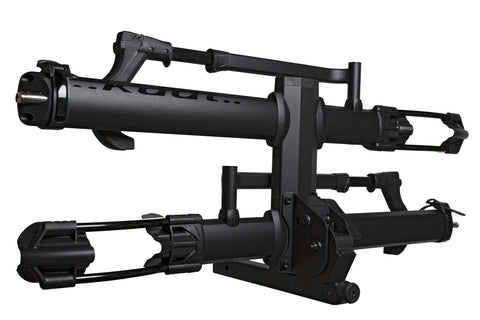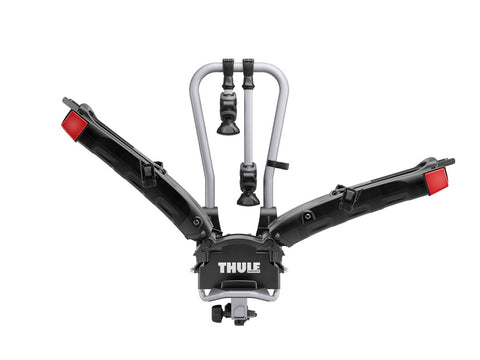Where Did Cycling Originate?
Where Did Cycling Originate?
As you load up your bike racks this weekend and head out to your favorite cycling spot, take a moment to appreciate that 2017 marks the 200th anniversary of the birth of cycling. Though the bicycle as we know it emerged gradually, its earliest iteration, the velocipede, was created in 1817, by the German Baron Carl von Drais.
The Velocipede
The Baron’s contraption had no pedals but was essentially a board with a wagon wheel on either end and a steering wheel up front. The rider would straddle the board and “run” along the ground, much like the balance bikes used by young children today. The machine enabled the rider to move more quickly than he or she could when simply running. It also allowed him or her to coast, covering greater distances with less effort.
Bone-Shakers and Penny-Farthings
Inventors were constantly working to improve the design of the velocipede. In the 1860s the blacksmith Pierre Michaux in Paris added lever arms and pedals to the front wheels of the machine, creating the first pedaled bicycle. The wealthy Olivier brothers tested the machine, traveling from Paris to Avignon in only eight days. They were impressed and formed a partnership with Michaux and their friend Georges de la Bouglise to mass-produce the contraption.
Though pedals made the bicycle easier to power and did not ruin boots, the machine had no shock absorption and was commonly called the “bone-shaker”, particularly in America where road surfaces were much rougher than European ones. In time rubber tires and ball bearings were added to the design, greatly increasing the comfort of the ride.
Because the pedals of Michaux’s bike attached directly to the front wheel, the only way to increase leverage and speed was to increase the size of the wheel. Front wheels became enormous and back wheels shrunk, and the high bicycle, or “penny-farthing”, was born. This design allowed riders to travel much faster, but it was also much more precarious. Riders frequently suffered broken wrists, concussions and other injuries, and the high bicycle never caught on outside the circles of well-to-do adventurous young men.
The Rover
In 1885, John Kemp Starley created the Rover, the first successful “safety bicycle”. The Rover used a chain and gear to increase leverage, allowing the front wheel to return to a manageable size without sacrificing speed. Moving the pedals from the wheel to the frame made steering much easier. Pneumatic tires increased the comfort of the ride on paved streets. The combination of comfort, speed, safety and ease of steering made the Rover popular with all ages of men and women. The basic construction of a bicycle has changed very little since.
From Recreation to Sport
Now that bicycles offered speed as well as safety, they became increasingly popular for transportation as well as recreation and sport. The first bicycle race actually took place decades before the addition of the chain and gear, in 1868 when the Michaux Company initiated a race through the Paris suburb of Saint Cloud to promote their brand. James Moore, an expatriate Englishman, won this 1,200-meter race. The following year Moore also won the first city-to-city race, biking the 135-kilometer distance from Paris to Rouen in a quick 10 hours and 25 minutes.
Track Races
While road races grew in popularity throughout Europe, in England and the United States most races were held on tracks. By the 1890s over 100 tracks had been built around the United States. Around 600 competitive cyclists competed in races from Boston to San Francisco and St. Louis to Salt Lake City.
Mile-a-Minute and the Six-Day Race
Some races offered the cycling equivalent of the 100-yard dash. On June 30, 1899, Charles M. Murphy completed a mile in 57.8 seconds, earning him the nickname “Mile-a-Minute Murphy”. Other racers were in it for the long haul; six-day races flourished in the 1890s. These 142-hour ordeals awarded enormous cash prizes, but in time the sleep deprivation was deemed too cruel, and the single-competitor race was transformed into a two-person team sport. While the popularity of this race waned in the United States during the Great Depression, it remains popular in Belgium, France, Italy and Germany.
The Tour de France
The six-day race led the way for the most popular multi-day cycling event, the Tour de France. First held in 1903, this 21-day race takes cyclists through 1500 miles of French cities and countryside. Other popular three-week races include Italy’s Giro d’Italia and Spain’s Vuelta a España. Bike races offer substantial prizes; the Tour de France alone offers its winner $2.5 million.
Cyclocross
Not all cyclists prefer paved roads. The first Cyclocross race actually took place in France a year before the first Tour de France. Cyclocross takes riders through fields, across barriers and over hills on modified road bikes. Off-road biking continued to develop as a sport through the early 1900s, but it truly came into its own in Marin County, California in the 1960s and 1970s. Here cyclists developed balloon-tired cruiser bikes that could be ridden down rough downhill roads and trails, and mountain biking was born.
Olympic Cycling
Cycling’s popularity grew just in time for it to be included in the first modern Olympic games in 1896. Track events were held in the newly constructed Neo Phaliron Velodrome, while a single road event took racers from Athens to Marathon and back. Cycling has been a popular event at every Summer Olympics since. Women’s cycling events were added in 1984 and 1988. The Atlanta, GA games in 1996 hosted the first mountain bike race, and BMX racing was added in 2008.
Bicycling Today
We’ve come a long way since the days of velocipede. Today over a billion people worldwide use bicycles for transportation, tourism, recreation and sport. No matter which type of cycling you prefer, Cracks & Racks offers bike racks to suit the needs of casual weekend riders to racing fanatics.






